#third anglo dutch war
Text

The Battle of Texel 1673 by Jan de Quelery
#battle of texel#battle of kijkduin#age of sail#art#jan de quelery#netherlands#england#michiel de ruyter#prince rupert#france#dutch republic#dutch#english#french#fleets#navy#royal navy#warship#warships#naval battle#naval warfare#history#europe#european#third anglo dutch war#franco dutch war#north sea#texel#royal prince#kijkduin
47 notes
·
View notes
Photo


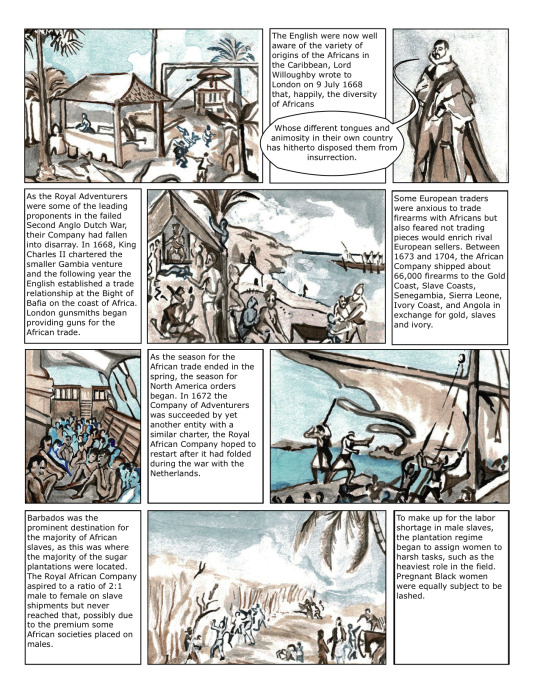

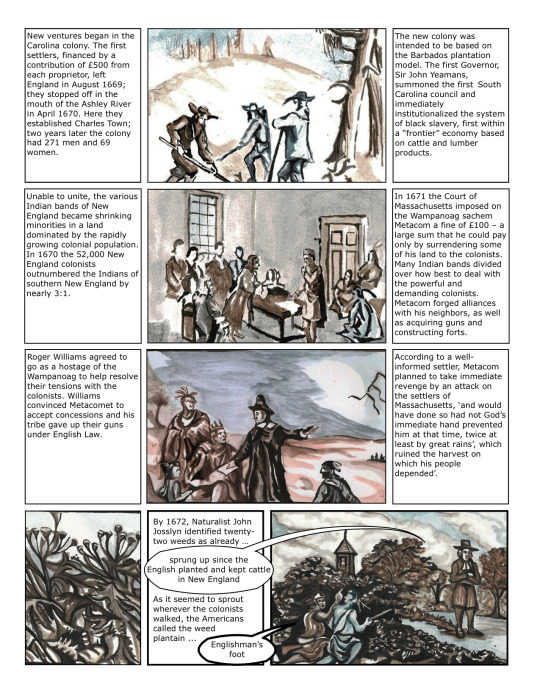
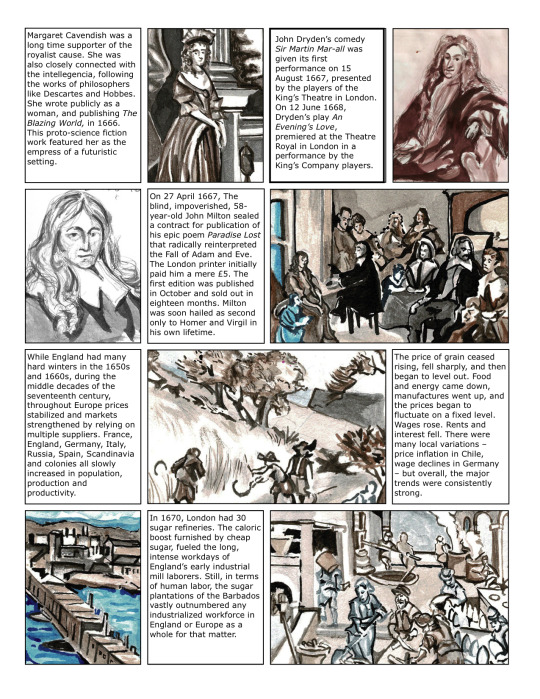

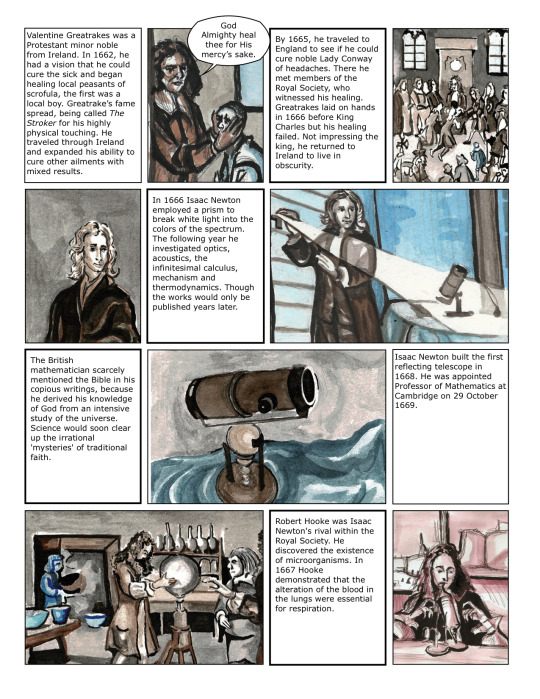


A continuation in the unending saga of fake comics. As always, this Anglo-centric work (written in English) left much out. The fake-comic did not fully engage in a Dutch narrative. Perhaps one day that narrative will be better detailed. 1672 was a critical year for the Dutch, especially their war with France. The African narrative is always something that could use more illumination as this period was what Ira Berlin called the coming of the ‘Plantation Generation’ on the mainland colonies. Previously the majority of the colonies labor depended on white indentured labor with the black population being a small minority. From my understanding, the Barbados plantation system began in legal form around 1660 and the racial-legal system spread to other English speaking colonies.
#pieter de ruyter#second anglo dutch war#restoration#third anglo dutch war#history comics#fake comics#samuel#anne bradstreet#john milton#moll davis#history of currency#captain morgan#hudson bay company#quaker history#robert hooke#isaac newton#claude duval#valentine greatrakes#margaret cavendish#william penn#john dryden#metacom#roger williams
44 notes
·
View notes
Text
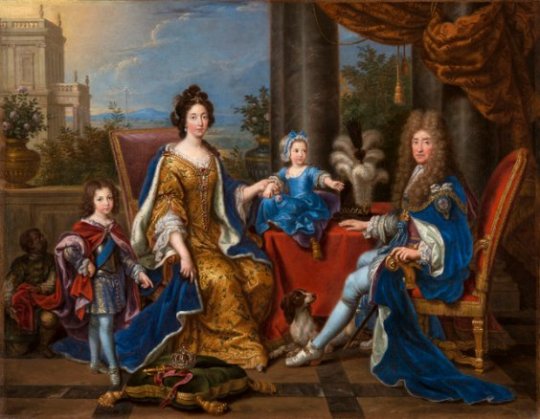
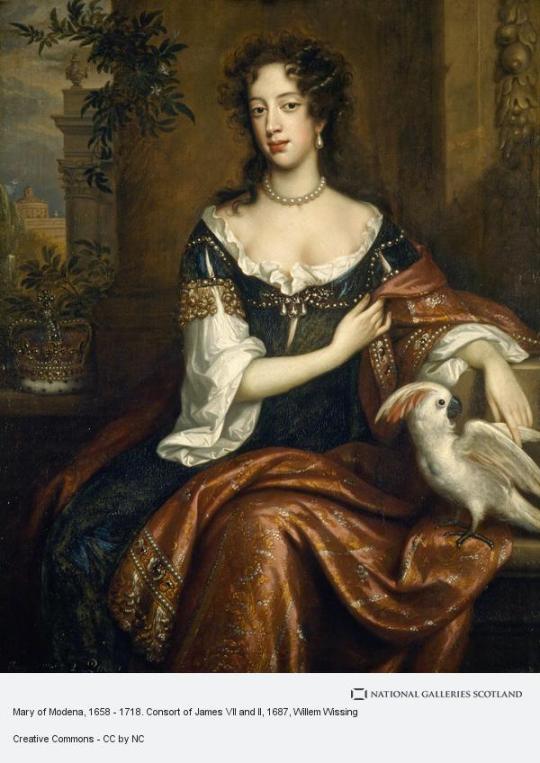
On 21st November 1673 the marriage took place in London of James, Duke of York and Albany, to his second wife, Mary of Modena.
This was a very important event in our history, and kicked off the Jacobite Cause.
James was the younger son of Charles I and younger brother of Charles II. He would go on to be James VII of Scotland on the death of his brother on February 6th 1685.
I normally don’t give our monarchs their previous titles before being crowned but James Francis Edward’s title, Duke of York and Albany is quite important, after the restoration of Charles II to the throne in 1660, James became Lord High Admiral and commanded the Royal Navy during the Second and Third Anglo-Dutch Wars . After its capture by the English in 1664, the Dutch territory of New Netherland was renamed New York in his honour; and Fort Orange, 150 miles up the Hudson River, was renamed Albany in honour of his main Scottish title. So New York and the state capital of Albany are both named in honour of one of the last Stuart Monarchs.
Back to the main reason for this post, James’ second marriage, his first wife Lady Anne Hyde died in 1671, and in 1673 James married the Catholic Mary of Modena: who many in England came to view as an agent of the Pope.
All of this mattered greatly to a virulently anti-Catholic nation because Charles II, although fathering many illegitimate children, had been unable to produce a legitimate heir: meaning that the Catholic James was next in line to the throne. Parliament responded by trying to pass the Exclusion Bill, which would have debarred James from the succession. Each time it came up for debate, Charles II dissolved Parliament, before finally ruling as an absolute monarch from 1681. Public support for Charles II grew (and the dislike of James eased) after the failed Rye House Plot of 1683, a Protestant plan to assassinate both of them on their way back to London from the races at Newmarket.
Charles II died, still without legitimate offspring, on 6 February 1685, to be succeeded by James VII/II. The succession was challenged by Charles II’s eldest illegitimate son, the Protestant Duke of Monmouth in what became known as the Monmouth Rebellion. James defeated Monmouth at the Battle of Sedgemoor on 6 July 1685, and Monmouth was subsequently executed, along with many of his supporters. Meanwhile, in Scotland, the Earl of Argyll landed at Campbeltown with 300 Dutch troops on 20 May 1685 in a separate attempted uprising against James. This also swiftly failed.
James quickly confirmed the worst fears of many of the Protestants in his Kingdoms, reversing strong anti-Catholic discrimination and placing Catholics in senior positions in government, the army and the academic world. On 4 April 1687 James codified his views in the Declaration of Indulgence or the Declaration for the Liberty of Conscience. The apparent aim was to establish freedom of religion in James’ kingdoms, though it may equally have been calculated to appeal to Protestant dissenters: whatever its true aims, it was perceived by mainstream Protestants as an assault on their dominance.
Matters came to a head in 1688. In April, the Archbishop of Canterbury and six other Bishops petitioned James, requesting he review his religious policies. He responded by arresting them and putting them on trial for seditious libel. James’ credibility took a severe knock when the Bishops were subsequently acquitted. And then on 10 June, Mary of Modena gave birth to a son, James Francis Edward Stuart, and Protestants found themselves looking at the prospect of a Catholic dynasty.
On 30th June 1688 a group of Protestant nobles asked William, Prince of Orange, by now married to James’ elder daughter Mary, to come to England with an army to overthrow James. James was confident he would prevail, and turned down offers of military assistance from Louis XIV of France. But when William of Orange landed in Brixham in south west England on 5 November 1688 at the start of the “Glorious Revolution”, much of James’ army switched allegiance to him; and even James’ younger daughter Anne came out in support of William and Mary. On 11th December 1688, James VII/II tried to escape to France. He was caught in Kent, but William allowed him to leave on 23rd December 1688. James was welcomed by Louis XIV, who offered him a palace and a large pension.
William called a Convention Parliament in England, which on 22nd January 1689 declared that by attempting to flee his country, James had abdicated the throne, leaving it vacant. And instead of the crown passing to James’ young Catholic son, James Francis Edward Stuart, they decided it should go to his Protestant daughter, Mary II, who would rule jointly with her husband, who would become William III of England. In March 1689, a Scottish Convention met in Edinburgh to decide the future of the Scottish Crown. Opinions were fairly evenly divided and for a while it was possible that James VII might be declared the rightful King of Scots. However, the well established Stuart trait of doing exactly the wrong thing at the wrong time came to the fore again, and when an arrogant and threatening letter he had written to the Scottish Convention was considered alongside a courteous and reasoned letter from William, it fatally undermined James’ support. On 4th April 1689 William II of Scotland and Mary II were declared joint monarchs of Scotland.
This marked the birth of the Jacobite cause among those who claimed that James and his descendants were (indeed, still are) the rightful Kings of England, Scotland and Ireland. The movement took its name from the Latin form of James, Jacobus.
Over the following century efforts by the Jacobites to regain power would lead to frequent unrest, especially in Scotland, and eventually to the suppression of the entire Highland way of life. The first Jacobite uprising in Scotland, under the leadership of Viscount Dundee, began almost immediately, on 27th July 1689.
The first pic is King James VII with Mary, her six-year-old son James Francis Edward and Princess Louisa Maria Teresa, it is on display at the Palace of Holyroodhouse in Edinburgh.
7 notes
·
View notes
Text
A warship employed in the Anglo-Dutch wars of the 17th century has been identified as a wreck off the coast of Eastbourne, England. So what brought this machine of war to the seabed, and why was that instrumental in starting the Third Anglo-Dutch War?
33 notes
·
View notes
Text
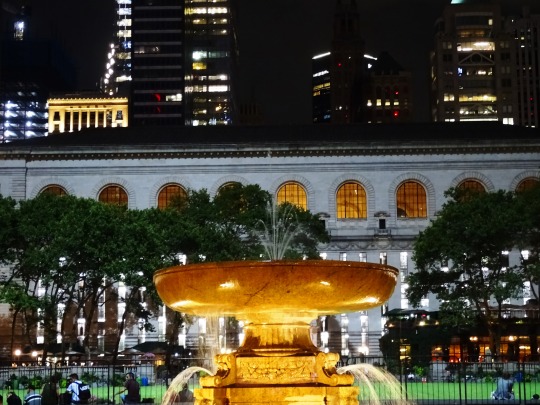



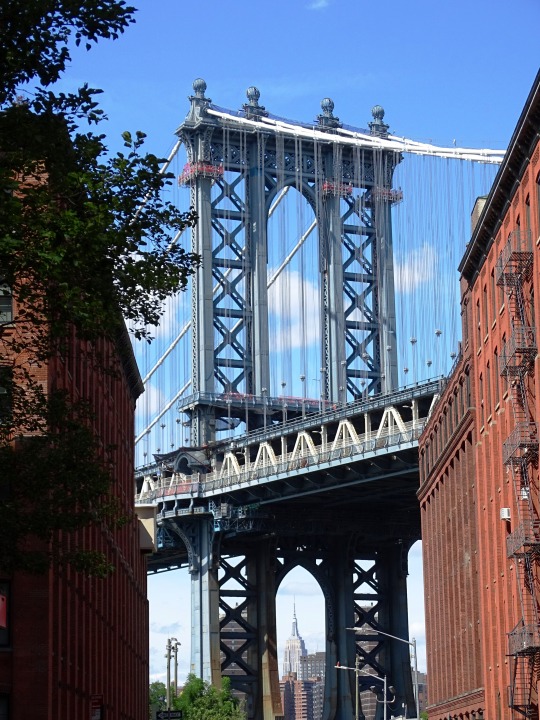










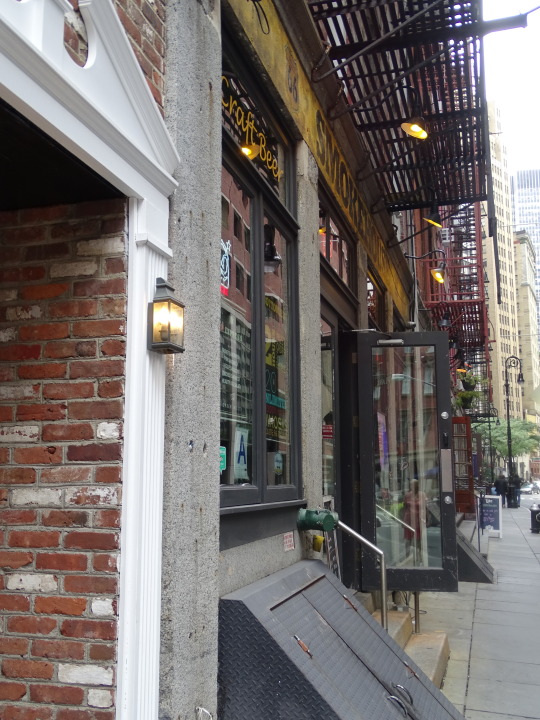

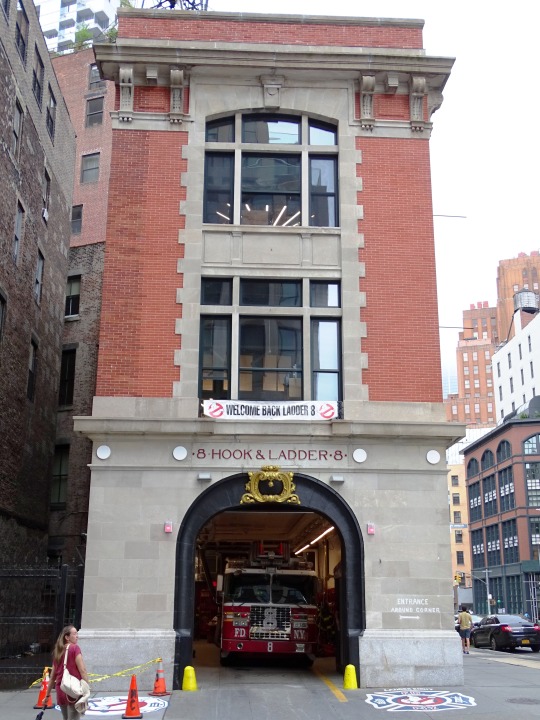



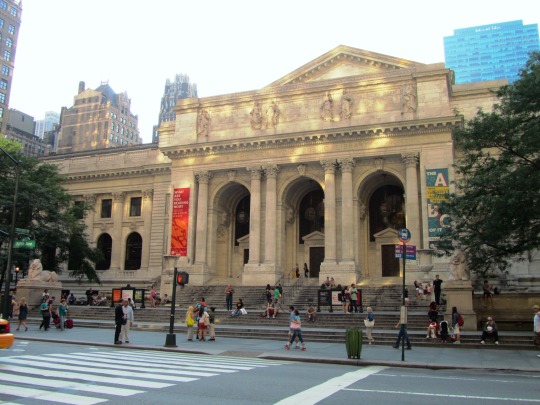
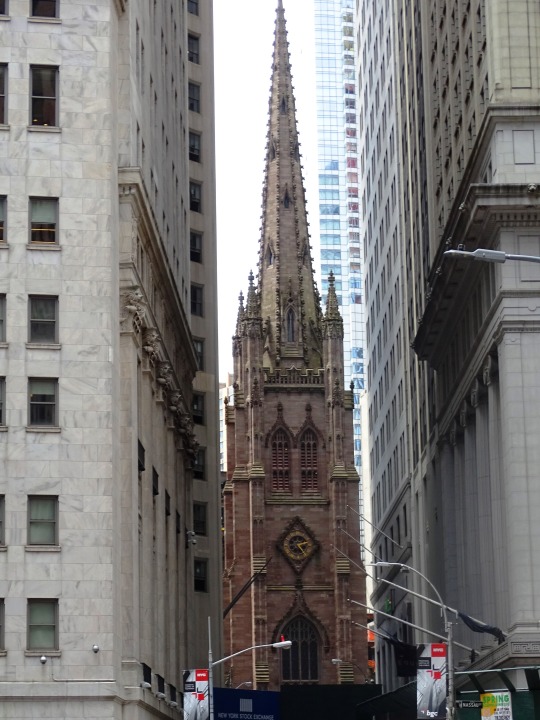



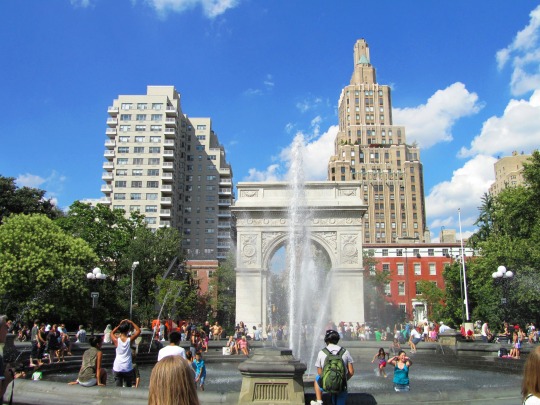
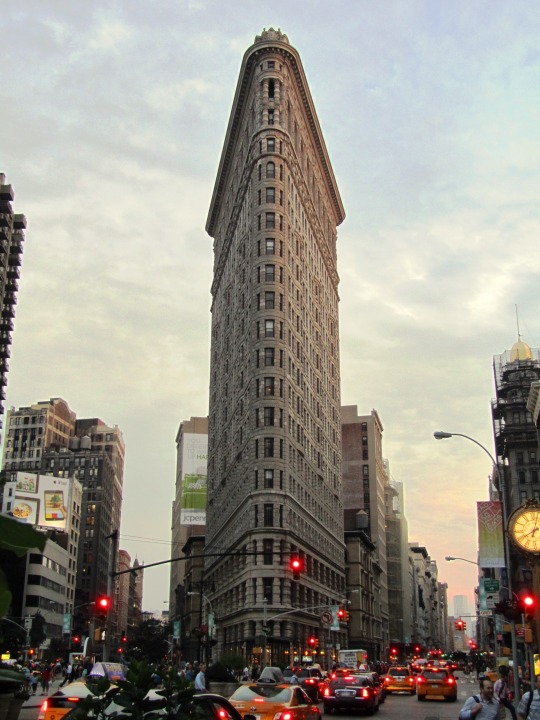


Great Britain and the Netherlands signed the Treaty of Westminster on February 19, 1674, ending the Third Anglo-Dutch War. A provision of the agreement transfers the Dutch colony of New Amsterdam to England, and it is renamed New York.
#Alamo by Tony Rosenthal#Treaty of Westminster#19 February 1674#travel#350th anniversary#US history#New York City#Manhattan#Brooklyn#vacation#skyline#Brooklyn Bridge#East River#Empire State Building#architecture#cityscape#summer 2019#Manhattan Bridge#Stephen A. Schwarzman Building#Bryant Park#One World Trade Center#Trinity Church#2018#Radio City Music Hall#Chrysler Building#original photography#tourist attraction#landmark#USA
2 notes
·
View notes
Text
The Wrath of Rampjaar: The Death and Destruction of Johan De Witt
The 1600s was a difficult chapter for human life. All over the world wars tore at the seams of land and families, and those that did not fall in battle found themselves vulnerable to falling from disease and plague brought on by forces that could not yet be understood. Many things that could not be explained resulted in further violence, fanaticism, death, and destruction dealt from one hand only to be horrifically felt by the other. Breakthroughs in science, exploration, and the arts collided with religious extremism and prejudice as humanity as a whole spun on, seemingly with chaos in every corner.
The Netherlands were one part of the world with turmoils erupting within their borders. In 1672 the country formerly known as the Dutch Republic was seeing the end of the “Dutch Golden Age” with simultaneous wars with England, France, and two German cities. The year 1672 would enter the history books as the Rampjaar, The Disaster Year. The Dutch people coined a phrase to describe this most unfortunate time: “The people were irrational, the government helpless, and the country beyond salvation.”

Allegory of the Disaster Year by Jan van Wijckersloot (1673). Image via Wikipedia.
Although it was obvious there were multiple problems facing the Dutch Republic in the 1672, some believed the problems took root decades earlier. William II Prince of Orange died of smallpox in 1650 leaving the Dutch with no official leader (referred to as a Stadholder.) It was this same year that Johan De Witt began to make his mark in the politics of the region. Johan’s family were bitter rivals of the Oranges and as De Witt began to move up the political ladder he allegedly (with the help of his powerful father who spent time in prison for his involvement in a coup d'etat of William II) quietly made moves and had words written into political documents to keep the young William III or any member of the Orange family from ruling. This allowed wheels to be set in motion to form a fully Republican regime with De Witt at the helm. After holding a number of high-standing positions he was elected to the role of Grand Pensionary of Holland in 1653, essentially making him the ruler of all Dutch provinces.
By the time the 1672 Year of Disaster loomed over the Dutch Republic the people had already endured enough war and horror to last a lifetime under the eye of Johan De Witt. There were the Anglo-Dutch Wars which threatened the land, but De Witt remained focused on the sea, taking every step possible to protect the economic interests in shipping and trading that filled his pockets while paying little mind to the forces surrounding the Dutch at their front doors. He also made it a point to delay the appointment of William III as captain general. The stubbornness of De Witt would have deep consequences when in May 1672 Louis XIV invaded the Dutch Republic, thus beginning the third Anglo-Dutch War.
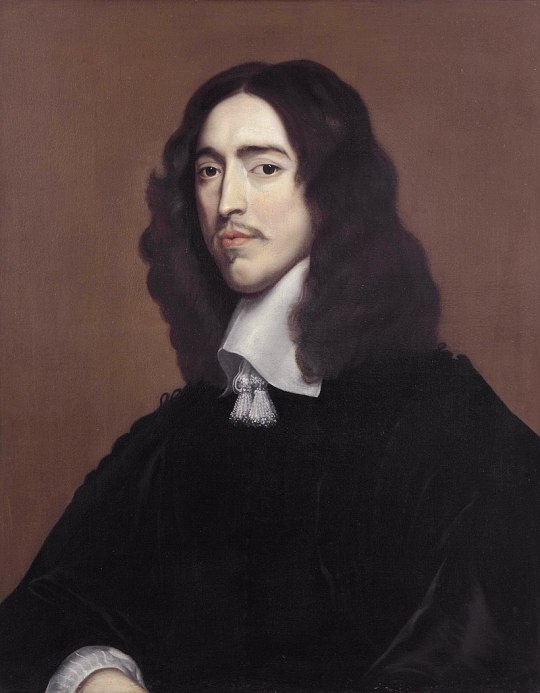
Portrait of Johan De Witt by Adriaen Hanneman (1652). Image via Wikipedia.
As troops moved straight into the heart of their homeland the exhausted Dutch people felt betrayed by their leadership and all eyes turned to Johan De Witt. Some were content to simply, but loudly, voice their opinions that the House of Orange should take back their power by any means necessary. Others showed their feelings of anger and betrayal in much more aggressive ways. On June 21st 1672 Johan De Witt was attacked by a man who was armed with a knife and an intent to kill. The assailant did succeed in brutally stabbing him, but he survived. Johan’s brother Cornelis was also feeling the pressure of the simmering public and on July 24th he was arrested under charges of treason against the House of Orange. He was brought to prison in The Hauge where he was tortured in order to obtain a confession. While his brother was recovering from being nearly assassinated, Cornelis was refusing to confess to any wrongdoing and was eventually sentenced to exile.
Being attacked with a malicious blade changed De Witt and after a lengthy recovery he resigned from his position on August 4th 1672. At the time of his resignation his brother Cornelis was still wallowing in prison with his exile looming. On August 20th Johan visited his brother at the prison to assist him and see him off on what was supposed to be his date of forever departure from his homeland. It is unknown what the pair discussed that day, but it is almost certain they had no clue what was about to happen. Yes, Johan resigned and Cornelis was exiled, but the Dutch people were not ready to let the brothers walk peacefully away into a new chapter while they were left with suffering and debt that could follow them for generations. As the brothers talked in the prison they were attacked by a mob that were set on tearing them limb from limb.
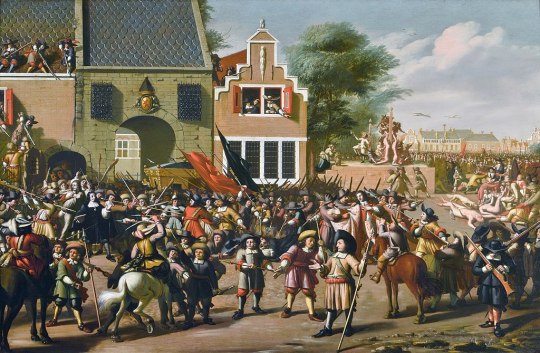
The Murder of the de Witt Brothers by Pieter Fris. Image via Wikipedia.
What unfolded was a scene that was feral, ferocious, and that has gone down in history through eyewitness accounts and multiple pieces of art. The mob ravaged the De Witt brothers. They were dragged into the street, shot, stripped of their clothing, and taken to the public gallows. If the brothers thought their end would be found in a broken neck at the end of a hangman’s noose they were terribly wrong. Once strung up the mob began to take souvenirs. Some accounts report that their eyes were stolen, others say they were later cut into pieces and distributed to the masses, and while that is up for debate one thing that is certain is that their bodies were sliced open, their livers stolen, and the organs were then roasted and consumed by those in attendance. After a lifetime of prestige and twenty years in power, Johan De Witt departed life alongside his brother after being mutilated and cannibalized by his own countrymen.
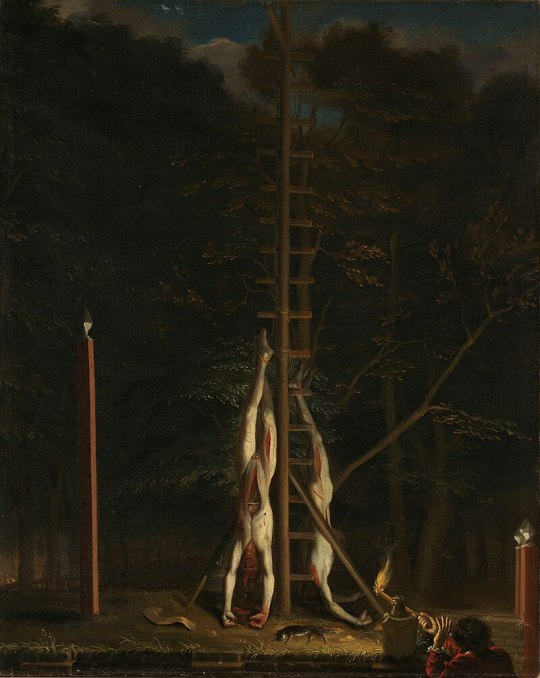
The Corpses of the De Witt Brothers by Jan de Baen. Image via Wikipedia.
With De Witt gone power went to William III of Orange, the same man who had his appointment as captain general stalled by De Witt and the son of William II whose death was used by De Witt and his father to make the turn to the Republican force that they hoped would keep the House of Orange out of power for good.
Whether William III had a hand in planning the attack and death of the De Witt brothers is debated to this day with answers unknown.
Today the prison where the De Witt brothers spent their last moments on earth still stands and has been repurposed as a history and art museum.
**********************************************
Sources:
That Time the Dutch ate their Prime Minister by Vlad Moca-Grama. DutchReview.com, March 3rd 2023. https://dutchreview.com/culture/dutch-history-crowds-ate-prime-minister/
A Dark and Stormy Bite: That Time a Bunch of Dutch People ate Their Prime Minister by Lillian Stone. TheTakeout.com, January 15th 2021. https://thetakeout.com/a-dark-and-stormy-bite-that-time-a-bunch-of-dutch-peop-1846044366
Johan De Witt. Encyclopedia.com.https://www.encyclopedia.com/history/encyclopedias-almanacs-transcripts-and-maps/johan-de-witt
#husheduphistory#featuredarticles#history#forgottenhistory#strangehistory#weirdhistory#tragichistory#historyclass#truestory#truth is stranger than fiction#DutchHistory#NetherlandsHistory#JohanDeWitt#ShockingHistory#horrorhistory#sadstory#HollandHistory
3 notes
·
View notes
Photo

William Dobson - Group portrait of Prince Rupert, Colonel William Legge, and Colonel John Russell - ca. 1645
Ashmolean Museum, Oxford, UK
William Dobson (4 March 1611 (baptised); 28 October 1646 (buried)) was a portraitist and one of the first significant English painters, praised by his contemporary John Aubrey as “the most excellent painter that England has yet bred”. He died relatively young and his final years were disrupted by the English Civil War.
Prince Rupert of the Rhine, Duke of Cumberland, KG, PC, FRS (17 December 1619 (O.S.) / 27 December (N.S.) – 29 November 1682 (O.S.) 9 December 1682 (N.S)) was an English army officer, admiral, scientist, and colonial governor. He first came to prominence as a Royalist cavalry commander during the English Civil War. Rupert was the third son of the German Prince Frederick V of the Palatinate and Elizabeth, eldest daughter of King James VI and I of Scotland and England.
Prince Rupert had a varied career. He was a soldier as a child, fighting alongside Dutch forces against Habsburg Spain during the Eighty Years' War (1568–1648), and against the Holy Roman Emperor in Germany during the Thirty Years' War (1618–1648). Aged 23, he was appointed commander of the Royalist cavalry during the English Civil War, becoming the archetypal "Cavalier" of the war and ultimately the senior Royalist general. He surrendered after the fall of Bristol and was banished from England. He served under King Louis XIV of France against Spain, and then as a Royalist privateer in the Caribbean Sea. Following the Restoration, Rupert returned to England, becoming a senior English naval commander during the Second Anglo-Dutch War and Third Anglo-Dutch War, and serving as the first governor of the Hudson's Bay Company. He died in England in 1682, aged 62.
Rupert is considered to have been a quick-thinking and energetic cavalry general, but ultimately undermined by his youthful impatience in dealing with his peers during the Civil War. In the Interregnum, Rupert continued the conflict against Parliament by sea from the Mediterranean to the Caribbean, showing considerable persistence in the face of adversity. As the head of the Royal Navy in his later years, he showed greater maturity and made impressive and long-lasting contributions to the Royal Navy's doctrine and development. As a colonial governor, Rupert shaped the political geography of modern Canada: Rupert's Land was named in his honour, and he was a founder of the Hudson's Bay Company. Rupert's varied and numerous scientific and administrative interests, combined with his considerable artistic skills, made him one of the more colourful public figures in England of the Restoration period.
William Legge (1608 – 13 October 1670) was an English royalist army officer, a close associate of Prince Rupert of the Rhine.
John Russell (1620-1687) was an English soldier and politician who sat in the House of Commons from 1641 to 1644. He fought in the Royalist army in the English Civil War.
Russell was the third son of Francis Russell, fourth Earl of Bedford, known as the "wise earl", and his wife Catherine Brydges, daughter of Giles Brydges, 3rd Baron Chandos. He was a wealthy man with estates at Shingay, Cambridgeshire.
In 1641, Russell was elected Member of Parliament for Tavistock in the Long Parliament after his brother William Lord Russell inherited the peerage. Russell served in the King's army and was a member of the Sealed Knot. The family had divided loyalties in the Civil War. His father had been a champion of the parliamentary cause and his brother changed sides twice. He had many aristocratic equally vacillating connections among his brothers-in-law: the Parliamentarians, Lord Brooke and Lord Grey of Wark, the turncoat Earl of Carlisle and the Royalists Lord Bristol and Lord Newport of High Ercall. Russell commanded Prince Rupert's blue coated regiment of foot, and was disabled from sitting in parliament in 1644. He was prominent at the storming of Leicester in May 1645, was wounded at Naseby and was in the Oxford garrison before its surrender.
After the Restoration Russell was commissioned colonel and captain of John Russell's Regiment of Guards which became incorporated into the 1st Regiment of Foot Guards, or later the Grenadier Guards. He commanded the regiment until 1681. He enjoyed dress, dance, and music although his taste belonged to the fashion of an earlier generation.
10 notes
·
View notes
Text
Animation Night 114 - Joann Sfar
So. Hello everyone! Welcome back to Animation Night.
In the misty olden days of Animation Night, back on #11, we held a night on French animation. On that day we were going to watch The Rabbi’s Cat, directed Joann Sfar. But, unfortunately, the torrent gods were not kind enough to grant me seeds, and so we didn’t get the chance.
But in the time since, it seems a seed managed to log on! So we can finally see what we missed...

Joann Sfar, then! Sfar is a French comics writer and artist, of the major figures of a ‘new wave’ of bandes desinées in the mid-2000s. He’s got quite a set of parents: his mother Lilou was an Ashkenazi-Jewish pop singer from Ukraine, and his father André Sfar a Sefardi-Jewish lawyer from Algeria who spent his career taking down neonazis.
And if that’s not enough, Lilou died when Joann was just three years old, so he was raised by André along with Lilou’s own father, a Ukrainian military doctor who during WWII was able to save the injured right hand of the novelist André Malraux, author of La Condition humaine (known in English as Man’s Fate) and thereby secure himself French citizenship. This information I’m just copying from Wikipedia, but it seems to be sourced from interviews with Sfar.
All this is relevant, because Sfar channels a lot of his life into his works. The Rabbi’s Cat in particular draws on his father’s life in Algeria, in the 1920s when Algeria was a French colony (forty years before Algeria would secure its independence).

A brief word on the background to this: by 1830, Algeria had been controlled for hundreds of years by the Ottoman empire, during which period it enjoyed more or less independence, sometimes even having wars with other Ottoman subjects. It was one of several homes of the ‘Barbary pirates’, who attacked European towns and ships primarily to take slaves.
It seems that these ‘pirates’ were continuous with the state, with the ruler’s title of Dey established by the corsair captains in 1671, and recognised by the Ottomans as regent from 1710, taxing a countryside ruled by ‘autonomous tribal states’ (a phrase due to Helen Chapan Metz, whose Algeria: A Country Study seems to have been paraphrased to make the Wikipedia article.)
Despite many Deys getting assassinated, this arrangement remained stable and lasted up into the 19th century. Gradually, though, the European powers started to win the naval wars: the Spanish leveled the city of Algiers in 1784, the US defeated the Ottoman Algerians twice in the early 1800s, and then an Anglo-Dutch fleet showed up in 1816 to bombard Algiers again. Finally, the French invaded in the 1830s, taking first Algiers and then gradually the rest of the country by 1875 and killing ‘approximately 825,000’ indigenous Algerians in the process through ‘scorched earth’ warfare and resulting disease, reducing the population by around a third.
After the end of the war, thousands of French and European settlers moved into Algeria, and the French ran a program of forced assimilation, while confiscating communal land from the ‘tribal peoples’ for the private benefit of European settlers, while suppressing the native Muslim population. Eventually, following the end of WWII, Algeria would throw off French rule after a brutal war in which they faced concentration camps, rape, torture and arbitrary, gruesome executions, a period famously written about by Frantz Fanon’s The Wretched of the Earth; all of this proved a terrible way to control a population and the Algerians fought back hard, until the French begrudgingly accepted Algerian independence in 1962. Since then, the country has mostly been ruled by the FLN, the primary nationalist party.

This story takes place roughly in the middle of French rule, during the 1920s. The premise is that a cat belonging to a Sefardi rabbi eats a parrot, gaining the ability to speak; deploring the cat’s behaviour and sarcasm, the rabbi decides he ought to teach the cat Torah, which throws open a theological can of worms.
So, more historical background! Jews in Algeria during the period of French colonisation were allowed to gain French citizenship while Muslims were not, putting them in the awkward (and perhaps all too familiar) position of go-between for colonisers and colonised and potential scapegoat. During the war for independence, the FLN appealed to Jews to side with them, but a large part of the Jewish population sided with the French instead; after the war, only three-generation Muslims were given Algerian citizenship and almost all the Jewish population of Algeria fled to France, André Sfar presumably among them. So that’s the background inflecting Joann’s life; by the time he was born in 1971, the war was over, and all of this he could only hear second hand.
The Rabbi’s Cat began life as a comic book series which ran from 2002-2006, went on hiatus, and then resumed in 2015 with near-annual releases up until 2021. I haven’t read it, but you can read a brief review of it here.

So now we come to the actual animated film, created by Sfar’s own Autochenille Production, a company founded in 2007 to make “author-driven, challenging films to appeal to children and adults” named after a car that features in The Rabbi’s Cat. It is funded by multiple French TV networks; I would not be surprised if it also had a bunch of government arts council funding like the vast majority of European animated films. It dropped at - where else? - Annecy in 2011, and duly won the award.
Of its production, most information is only available in French, but luckily the MTL is pretty good. Sfar had been bombarded with offers to adapt his comic, refusing all of them; he only thought of directing it himself when his editors asked him why. He was accompanied by two more experienced directors of animated films, Clément Oubrerie and Antoine Delesvaux, and brought in a lot of younger animators such as the ‘band of little geniuses’ Hugo Ferrandez, Grégory Elbaz, Gabriel Schemoul and Agnès Maupré with fine arts backgrounds, plus a couple of experienced animators in Jean-Christophe Dessaint and ‘Zyk’ who I believe helped with shooting video reference.
The animation process involved shooting a lot of live action reference footage with pre-voicing; their inspiration went back to early Disney (Animation Night 84) and Fleischer (briefly discussed Animation Night 21). Of Fleischer, Sfar says (google translation):
"Leurs dessins animés ne s'adressaient pas qu'aux enfants, raconte Sfar. On y voyait des histoires d'amour, des voyous, des vraies bizarreries. Le studio Fleischer était très cosmopolite, un mélange d'immigrés juifs et italiens. Toutes leurs musiques étaient faites par la crème des jazzmen noirs. Plus quelques vrais truands parmi les bailleurs de fonds."
"Their cartoons weren't just for children, says Sfar. We saw love stories, thugs, real oddities. The Fleischer studio was very cosmopolitan, a mixture of Jewish and Italian immigrants. All their music was made by the cream of black jazzmen. Plus a few real mobsters among the backers."
Visually, he had ambitions: in contrast to Persepolis, clearly a big inspiration, he wanted to do something ‘truly cinematic’ with ‘great spaces, depth of field’ inspired by Fritz Lang, Fellini and del Toro. Sfar had directed one film before this in live action, but this was his first time in animation. Not that you’d know it: a quick scan through shows the film is full of nice little subtle bits of character acting, and the backgrounds have an unusual style that takes after the comics in using flat shading, thin black lines and hatching.
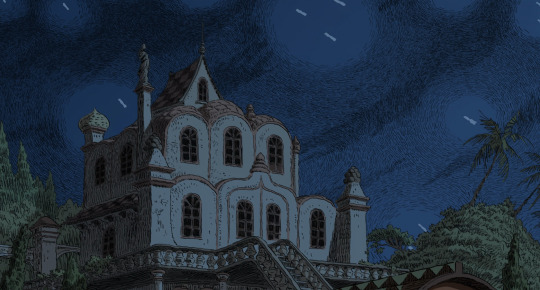
It doesn’t always quite work (scenes of perfectly static water ripples are especially odd), but it’s certainly distinctive.
Narratively, the film goes through a series of episodes, eventually turning on the Rabbi, his cat and a Soviet painter going out on an expedition into the desert intending to find a country of Jews in Ethiopia. Reviews particularly speak of the film’s illustration of kinship between Jewish and Arab people; they are sometimes critical of the plot’s meandering but generally come out to praise the film. And it comes with a friend’s recommendation as well, so I’m looking forward to it a lot.
It seems to be Sfar’s only animated film, sadly. He was a producer on Aya of Yop City, another autobiographical comic-based film directed by Ivorian author Maruerite Aboute and Clément Oubrerie; a big step up for French animation set in Africa insofar as its director is actually African (*looks sternly at Kirikou*). Unfortunately, I have not been able to track down a copy of this film.
Then, to round out our program, we have a little oddity from 2014: a package film that brings together renowned independent animators from across the world. That film is The Prophet, adapted from the 1923 book of mystic parables by the Lebanese-American poet and writer, Kahlil Gibran. The film is the passion project of actress Salma Hayek, directed by The Lion King director Roger Allers; it comprises a unifying CG story about the meeting of a young girl and a too-good-for-this-world poet, framing a series of short musical sequences based on Gibran’s poems, each one directed by a well-known independent animator in their characteristic style.
youtube
Of the list, then, one is Sfar (hence the inclusion in this night). Others include the brilliant Tomm Moore of Cartoon Saloon (Animation Night 14, Animation Night 49) and Bill Plympton who we met a few weeks ago (Animation Night 112), as well as Mohammed Saeed Harib from the UAE, creator of the FREEJ series, and Paul and Gaetan Brizzi, a pair of twins who have both worked together on French animation such as Asterix vs Caesari and Babar before joining Disney in 1990 and working there for several decades during the ‘renaissance’ period. With such a diverse and talented set of animators on board, how could it possibly go wrong?
Unfortunately, the last inclusion is... more of a problem for me. Nina Paley is an independent animator and copyleft proponent known for her two religious satire films Sita Sings the Blues and Seder-Masochism... and also an active TERF, like, and I don’t mean this in the sense of ‘said some nasty things once or twice’ but like, ‘outspoken proponent of the “gender critical” hate-cult movement’. She’s one of those people in the open source movement who just seem to think that, after making a few breaks from the social dogma, they have everything figured out, and then immediately take a massive shit on some other group of people. And it inflects her movies too; Seder-Masochism is a gender-essentialist fable all about how patriarchal authority covered up the good wholesome womens’ version of Judaism, which is hard to swallow with the TERF thing running under the surface. So as far as I’m concerned, she can fully fuck right off; I will show some films by some pretty dubious people but this one’s personal lmao; don’t expect to ever see Animation Night: Nina Paley.
On top of that, we can add the casting of Liam Neeson as the voice of the poet. To be fair, when this film came out, Neeson’s bizarre racist diatribe had yet to happen, but his voice just sounds glaringly awful in the role of ‘the poet’, the intonation of an American reading out quotes in a civ game. It sounds bad enough that I went looking for a copy of the French dub, without success. The trailer ends with him going ‘my crime? poetry.’ in a voice like we’re supposed to go oooooh, how could they and not just burst out laughing. I went looking for the French dub as more likely to be bearable, but I can only find it in English.
So the production seems like kind of a mess. What I might do is just like, fast forward the framing story and show only the guest segments, since they’re really the only reason I’m interested in this thing in the first place. Still, it is the only other piece of Sfar animation I have to hand, and I do think there is likely to be some gorgeous animation in those guest segments.
And that’s about all I have time to write. Animation Night 114 will begin at around 8pm UK time, around 4 hours from this post, at picarto.tv/canmom - until then I will be working on my Chroma Corps character, so please feel free to drop by!
7 notes
·
View notes
Text
The Spanish Armada

The Spanish Armada was an enormous 130-ship naval fleet dispatched by Spain in 1588 as part of a planned invasion of England. Following years of hostilities between Spain and England, King Philip II of Spain assembled the flotilla in the hope of removing Protestant Queen Elizabeth I from the throne and restoring the Roman Catholic faith in England. Spain’s “Invincible Armada” set sail that May, but it was outfoxed by the English, then battered by storms while limping back to Spain with at least a third of its ships sunk or damaged. The defeat of the Spanish Armada led to a surge of national pride in England and was one of the most significant chapters of the Anglo-Spanish War.
King Philip II’s decision to attempt an overthrow of Queen Elizabeth I was several years in the making. Despite their family connections—Philip had once been married to Elizabeth’s half-sister, Mary—the two royals had severe political and religious differences and had engaged in a “cold war” for much of the 1560s and 1570s. Philip was particularly incensed by the spread of Protestantism in England, and he had long toyed with the idea of conquering the British Isle to bring it back into the Catholic fold. Tensions between Spain and England flared in the 1580s, after Elizabeth began allowing privateers such as Sir Francis Drake to conduct pirate raids on Spanish fleets carrying treasure from their rich New World colonies. By 1585, when England signed a treaty of support with Dutch rebels in the Spanish-controlled Netherlands, a state of undeclared war existed between the two powers. That same year, Philip began formulating an “Enterprise of England” to remove Elizabeth from the throne.
The Spanish Armada was a naval force of about 130 ships, plus some 8,000 seamen and an estimated 18,000 soldiers manning thousands of guns. Roughly 40 of the ships were warships. The Spanish plan called for this “Great and Most Fortunate Navy” to sail from Lisbon, Portugal, to Flanders, where it would rendezvous with 30,000 crack troops led by the Duke of Parma, the governor of the Spanish Netherlands. The fleet would then guard the army as it was ferried across the English Channel to the Kent coast to begin an overland offensive against London. It was impossible for Spain to hide the preparations for a fleet as large as the Armada, and by 1587, Elizabeth’s spies and military advisors knew an invasion was in the works. That April, the Queen authorized Francis Drake to make a preemptive strike against the Spanish. After sailing from Plymouth with a small fleet, Drake launched a surprise raid on the Spanish port of Cadiz and destroyed several dozen of the Armada’s ships and over 10,000 tons of supplies. The “singeing of the king of Spain’s beard,” as Drake’s attack was known in England, was later credited with delaying the launch of the Armada by several months. The English used the time bought by the raid on Cadiz to shore up their defenses and prepare for invasion. Elizabeth’s forces built trenches and earthworks on the most likely invasion beaches, strung a giant metal chain across the Thames estuary and raised an army of militiamen. They also readied an early warning system consisting of dozens of coastal beacons that would light fires to signal the approach of the Spanish fleet.
Led by Drake and Lord Charles Howard, the Royal Navy assembled a fleet of some 40 warships and several dozen armed merchant vessels. Unlike the Spanish Armada, which planned to rely primarily on boarding and close-quarters fighting to win battles at sea, the English flotilla was heavily armed with long-range naval guns. In May 1588, after several years of preparation, the Spanish Armada set sail from Lisbon under the command of the Duke of Medina-Sidonia. When the 130-ship fleet was sighted off the English coast later that July, Howard and Drake raced to confront it with a force of 100 English vessels. The English fleet and the Spanish Armada met for the first time on July 31, 1588, off the coast of Plymouth. Relying on the skill of their gunners, Howard and Drake kept their distance and tried to bombard the Spanish flotilla with their heavy naval cannons. While they succeeded in damaging some of the Spanish ships, they were unable to penetrate the Armada’s half-moon defensive formation.
Over the next several days, the English continued to harass the Spanish Armada as it charged toward the English Channel. The two sides squared off in a pair of naval duels near the coasts of Portland Bill and the Isle of Wight, but both battles ended in stalemates. By August 6, the Armada had successfully dropped anchor at Calais Roads on the coast of France, where Medina-Sidonia hoped to rendezvous with the Duke of Parma’s invasion army. Desperate to prevent the Spanish from uniting their forces, Howard and Drake devised a last-ditch plan to scatter the Armada. At midnight on August 8, the English set eight empty vessels ablaze and allowed the wind and tide to carry them toward the Spanish fleet hunkered at Calais Roads. The sudden arrival of the fireships caused a wave of panic to descend over the Armada. Several vessels cut their anchors to avoid catching fire, and the entire fleet was forced to flee to the open sea. With the Armada out of formation, the English initiated a naval offensive at dawn on August 8. In what became known as the Battle of Graveline's, the Royal Navy inched perilously close to the Spanish fleet and unleashed repeated salvos of cannon fire. Several of the Armada’s ships were damaged and at least four were destroyed during the nine-hour engagement, but despite having the upper hand, Howard and Drake were forced to prematurely call off the attack due to dwindling supplies of shot and powder.
With the Spanish Armada threatening invasion at any moment, English troops gathered near the coast at Tilbury in Essex to ward off a land attack. Queen Elizabeth herself was in attendance and - dressed in military regalia and a white velvet gown - she gave a rousing speech to her troops, one that is often cited as among the most inspiring speeches ever written and delivered by a sovereign leader: "I know I have the body of a weak, feeble woman; but I have the heart and stomach of a king, and of a king of England too, and think foul scorn that Parma or Spain, or any prince of Europe, should dare to invade the borders of my realm; to which rather than any dishonor shall grow by me, I myself will take up arms, I myself will be your general, judge and rewarder of every one of your virtues in the field." Shortly after the Battle of Graveline's, a strong wind carried the Armada into the North Sea, dashing the Spaniards’ hopes of linking up with the Duke of Parma’s army. With supplies running low and disease beginning to spread through his fleet, the Duke of Medina-Sidonia resolved to abandon the invasion mission and return to Spain by rounding Scotland and Ireland. The Spanish Armada had lost over 2,000 men during its naval engagements with the English, but its journey home proved to be far more deadly. The once-mighty flotilla was ravaged by sea storms as it rounded Scotland and the western coast of Ireland. Several ships sank in the squalls, while others ran aground or broke apart after being thrown against the shore.
By the time the “Great and Most Fortunate Navy” finally reached Spain in the autumn of 1588, it had lost as many as 60 of its 130 ships and suffered some 15,000 deaths. The vast majority of the Spanish Armada’s losses were caused by disease and foul weather, but its defeat was nevertheless a triumphant military victory for England. By fending off the Spanish fleet, the island nation saved itself from invasion and won recognition as one of Europe’s most fearsome sea powers. The clash also established the superiority of heavy cannons in naval combat, signaling the dawn of a new era in warfare at sea. While the Spanish Armada is now remembered as one of history’s great military blunders, it didn’t mark the end of the conflict between England and Spain. In 1589, Queen Elizabeth launched a failed “English Armada” against Spain.
King Philip II, meanwhile, later rebuilt his fleet and dispatched two more Spanish Armadas in the 1590s, both of which were scattered by storms. It wasn’t until 1604—over 16 years after the original Spanish Armada set sail—that a peace treaty was finally signed ending the Anglo-Spanish War as a stalemate.
3 notes
·
View notes
Text
Events 8.19
295 BC – The first temple to Venus, the Roman goddess of love, beauty and fertility, is dedicated by Quintus Fabius Maximus Gurges during the Third Samnite War.
43 BC – Gaius Julius Caesar Octavianus, later known as Augustus, compels the Roman Senate to elect him Consul.
947 – Abu Yazid, a Kharijite rebel leader, is defeated and killed in the Hodna Mountains in modern-day Algeria by Fatimid forces.
1153 – Baldwin III of Jerusalem takes control of the Kingdom of Jerusalem from his mother Melisende, and also captures Ascalon.
1458 – Pope Pius II is elected the 211th Pope.
1504 – In Ireland, the Hiberno-Norman de Burghs (Burkes) and Anglo-Norman Fitzgeralds fight in the Battle of Knockdoe.
1561 – Mary, Queen of Scots, aged 18, returns to Scotland after spending 13 years in France.
1604 – Eighty Years War: a besieging Dutch and English army led by Maurice of Orange forces the Spanish garrison of Sluis to capitulate.
1612 – The "Samlesbury witches", three women from the Lancashire village of Samlesbury, England, are put on trial, accused of practicing witchcraft, one of the most famous witch trials in British history.
1666 – Second Anglo-Dutch War: Rear Admiral Robert Holmes leads a raid on the Dutch island of Terschelling, destroying 150 merchant ships, an act later known as "Holmes's Bonfire".
1692 – Salem witch trials: In Salem, Province of Massachusetts Bay, five people, one woman and four men, including a clergyman, are executed after being convicted of witchcraft.
1745 – Prince Charles Edward Stuart raises his standard in Glenfinnan: The start of the Second Jacobite Rebellion, known as "the 45".
1745 – Ottoman–Persian War: In the Battle of Kars, the Ottoman army is routed by Persian forces led by Nader Shah.
1759 – Battle of Lagos: Naval battle during the Seven Years' War between Great Britain and France.
1772 – Gustav III of Sweden stages a coup d'état, in which he assumes power and enacts a new constitution that divides power between the Riksdag and the King.
1782 – American Revolutionary War: Battle of Blue Licks: The last major engagement of the war, almost ten months after the surrender of the British commander Charles Cornwallis following the Siege of Yorktown.
1812 – War of 1812: American frigate USS Constitution defeats the British frigate HMS Guerriere off the coast of Nova Scotia, Canada earning the nickname "Old Ironsides".
1813 – Gervasio Antonio de Posadas joins Argentina's Second Triumvirate.
1839 – The French government announces that Louis Daguerre's photographic process is a gift "free to the world".
1848 – California Gold Rush: The New York Herald breaks the news to the East Coast of the United States of the gold rush in California (although the rush started in January).
1854 – The First Sioux War begins when United States Army soldiers kill Lakota chief Conquering Bear and in return are massacred.
1861 – First ascent of Weisshorn, fifth highest summit in the Alps.
1862 – Dakota War: During an uprising in Minnesota, Lakota warriors decide not to attack heavily defended Fort Ridgely and instead turn to the settlement of New Ulm, killing white settlers along the way.
1909 – The Indianapolis Motor Speedway opens for automobile racing. Wilfred Bourque and his mechanic are killed during the first day's events.
1920 – The Tambov Rebellion breaks out, in response to the Bolshevik policy of Prodrazvyorstka.
1927 – Patriarch Sergius of Moscow proclaims the declaration of loyalty of the Russian Orthodox Church to the Soviet Union.
1934 – The first All-American Soap Box Derby is held in Dayton, Ohio.
1934 – The German referendum of 1934 approves Adolf Hitler's appointment as head of state with the title of Führer.
1936 – The Great Purge of the Soviet Union begins when the first of the Moscow Trials is convened.
1940 – First flight of the B-25 Mitchell medium bomber.
1941 – Germany and Romania sign the Tiraspol Agreement, rendering the region of Transnistria under control of the latter.
1942 – World War II: Operation Jubilee: The 2nd Canadian Infantry Division leads an amphibious assault by allied forces on Dieppe, France and fails, many Canadians are killed or captured. The operation was intended to develop and try new amphibious landing tactics for the coming full invasion in Normandy.
1944 – World War II: Liberation of Paris: Paris, France rises against German occupation with the help of Allied troops.
1945 – August Revolution: Viet Minh led by Ho Chi Minh take power in Hanoi, Vietnam.
1953 – Cold War: The CIA and MI6 help to overthrow the government of Mohammad Mosaddegh in Iran and reinstate the Shah Mohammad Reza Pahlavi.
1955 – In the Northeast United States, severe flooding caused by Hurricane Diane, claims 200 lives.
1960 – Cold War: In Moscow, Russia, Soviet Union, downed American U-2 pilot Francis Gary Powers is sentenced to ten years imprisonment by the Soviet Union for espionage.
1960 – Sputnik program: Korabl-Sputnik 2: The Soviet Union launches the satellite with the dogs Belka and Strelka, 40 mice, two rats and a variety of plants.
1964 – Syncom 3, the first geostationary communication satellite, is launched. Two months later, it would enable live coverage of the 1964 Summer Olympics.
1965 – Japanese prime minister Eisaku Satō becomes the first post-World War II sitting prime minister to visit Okinawa Prefecture.
1978 – In Iran, the Cinema Rex fire causes more than 400 deaths.
1980 – Saudia Flight 163, a Lockheed L-1011 TriStar burns after making an emergency landing at King Khalid International Airport in Riyadh, Saudi Arabia, killing 301 people.
1980 – Otłoczyn railway accident: In Poland's worst post-war railway accident, 67 people lose their lives and a further 62 are injured.
1981 – Gulf of Sidra Incident: United States F-14A Tomcat fighters intercept and shoot down two Libyan Sukhoi Su-22 fighter jets over the Gulf of Sidra.
1987 – Hungerford massacre: In the United Kingdom, Michael Ryan kills sixteen people with a semi-automatic rifle and then commits suicide.
1989 – Polish president Wojciech Jaruzelski nominates Solidarity activist Tadeusz Mazowiecki to be the first non-communist prime minister in 42 years.
1989 – Several hundred East Germans cross the frontier between Hungary and Austria during the Pan-European Picnic, part of the events that began the process of the Fall of the Berlin Wall.
1991 – Dissolution of the Soviet Union: The August Coup begins when Soviet President Mikhail Gorbachev is placed under house arrest while on holiday in the town of Foros, Ukraine.
1991 – Crown Heights riot begins.
1999 – In Belgrade, Yugoslavia, tens of thousands of Serbians rally to demand the resignation of Federal Republic of Yugoslavia President Slobodan Milošević.
2002 – Khankala Mi-26 crash: A Russian Mil Mi-26 helicopter carrying troops is hit by a Chechen missile outside Grozny, killing 118 soldiers.
2003 – A truck-bomb attack on United Nations headquarters in Iraq kills the agency's top envoy Sérgio Vieira de Mello and 21 other employees.
2003 – Shmuel HaNavi bus bombing: A suicide attack on a bus in Jerusalem, planned by Hamas, kills 23 Israelis, seven of them children.
2004 – Google Inc. has its initial public offering on Nasdaq.
2005 – The first-ever joint military exercise between Russia and China, called Peace Mission 2005 begins.
2009 – A series of bombings in Baghdad, Iraq, kills 101 and injures 565 others.
2010 – Operation Iraqi Freedom ends, with the last of the United States brigade combat teams crossing the border to Kuwait.
2013 – The Dhamara Ghat train accident kills at least 37 people in the Indian state of Bihar.
2017 – Tens of thousands of farmed non-native Atlantic salmon are accidentally released into the wild in Washington waters in the 2017 Cypress Island Atlantic salmon pen break.
2 notes
·
View notes
Text
Consistency and Outcome
I am not weighing in on any particular situation in the world, but a very popular stance, almost a reflex, for some, is to side with people seen as indigenous, even if a minority. This is, politically speaking, revanchism.
Apart from any practical considerations, and fully conceding that there have been monstrous cases of tyranny of the majority (e.g. Gentiles in the Third Reich), a deeper analysis of history would lead us to question whether it would be possible to hold such a stance consistently.
For instance, if we look at England: It was first owned by the Beaker Folk. Although some have speculated that there is direct Beaker ancestry in the southeast of Wales, this is unproven and possibly unprovable.
The Celts took the land from the Beaker Folk, the Romans from the Celts, the Anglo-Saxons from the Romans, the Vikings (Danelaw) from the Anglo-Saxons (long enough to change our language such that days of the week are named after Norse deities), the Normans then took it from both, and some would describe the Glorious Revolution as a successful Dutch invasion.
If we took a revanchist position, who would be the indigenous people we could identify, and then, even if we could, how would we return England to them?
There is no outright reason that first ownership, if it was in the past, automatically gives the right to take land owned in the present by persons (descendants) who were not themselves responsible for taking the land... on the other hand, there is nothing innately sacred about the majority.
Would, perhaps, a better stance be: Which side, if given power, would use it more responsibly? Before that question is even asked, moreover, the question of whether or not peace is possible must be asked, and considering the human consequences of war, peace must be preferred, and strongly so.
0 notes
Text
01 PAINTING - MARINE ART, WILLEM VAN DE VELDE THE YOUNGER'S THIRD ANGLO DUTCH WAR, WITH FOOTNOTES, #326
01 PAINTING – MARINE ART, WILLEM VAN DE VELDE THE YOUNGER’S THIRD ANGLO DUTCH WAR, WITH FOOTNOTES, #326
Willem van de Velde the YoungerA battle of the Third Anglo Dutch War, probably the London at the Battle of the Texel, August 1673Oil on canvas110.7 x 137.6cm (43 9/16 x 54 3/16in)Private collection
The Third Anglo-Dutch War, 27 March 1672 to 19 February 1674, was a naval conflict between the Dutch Republic and England, in alliance with France. It is considered a subsidiary of the wider 1672 to…
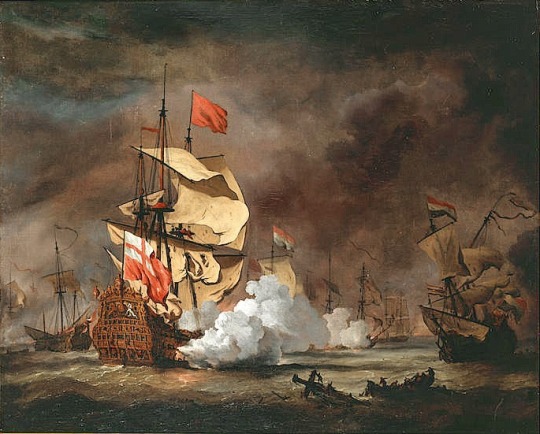
View On WordPress
0 notes
Photo
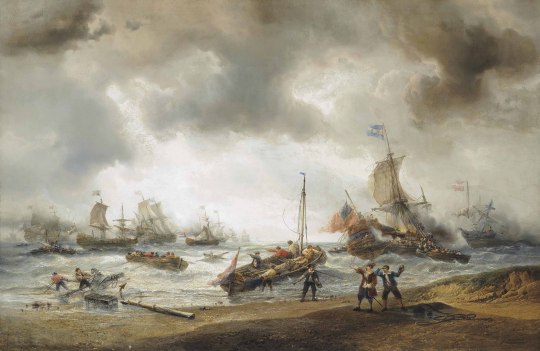
The closing stages of one of the battles in the Anglo-Dutch War, by François-Étienne Musin
#naval art#Anglo dutch war#well which one ? the first#second or third one ?#or maybe the fourth#17th#18th century#age of sail
69 notes
·
View notes
Photo
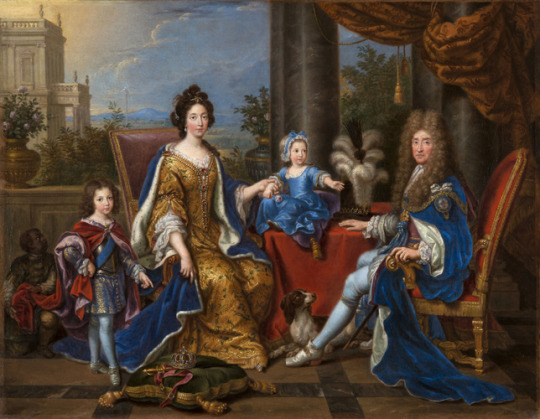
On 21st November 1673 the marriage took place in London of James, Duke of York and Albany, to his second wife, Mary of Modena.
This was a very important event in our history, and kicked off the Jacobite Cause.
James was the younger son of Charles I and younger brother of Charles II. He would go on to be James VII of Scotland on the death of his brother on February 6th 1685.
I normally don’t give our monarchs their previous titles before being crowned but James Francis Edward’s title, Duke of York and Albany is quite important, after the restoration of Charles II to the throne in 1660, James became Lord High Admiral and commanded the Royal Navy during the Second and Third Anglo-Dutch Wars . After its capture by the English in 1664, the Dutch territory of New Netherland was renamed New York in his honour; and Fort Orange, 150 miles up the Hudson River, was renamed Albany in honour of his main Scottish title. So New York and the state capital of Albany are both named in honour of one of the last Stuart Monarchs.
Back to the main reason for this post, James’ second marriage, his first wife Lady Anne Hyde died in 1671, and in 1673 James married the Catholic Mary of Modena: who many in England came to view as an agent of the Pope.
All of this mattered greatly to a virulently anti-Catholic nation because Charles II, although fathering many illegitimate children, had been unable to produce a legitimate heir: meaning that the Catholic James was next in line to the throne. Parliament responded by trying to pass the Exclusion Bill, which would have debarred James from the succession. Each time it came up for debate, Charles II dissolved Parliament, before finally ruling as an absolute monarch from 1681. Public support for Charles II grew (and the dislike of James eased) after the failed Rye House Plot of 1683, a Protestant plan to assassinate both of them on their way back to London from the races at Newmarket.
Charles II died, still without legitimate offspring, on 6 February 1685, to be succeeded by James VII/II. The succession was challenged by Charles II’s eldest illegitimate son, the Protestant Duke of Monmouth in what became known as the Monmouth Rebellion. James defeated Monmouth at the Battle of Sedgemoor on 6 July 1685, and Monmouth was subsequently executed, along with many of his supporters. Meanwhile, in Scotland, the Earl of Argyll landed at Campbeltown with 300 Dutch troops on 20 May 1685 in a separate attempted uprising against James. This also swiftly failed.
James quickly confirmed the worst fears of many of the Protestants in his Kingdoms, reversing strong anti-Catholic discrimination and placing Catholics in senior positions in government, the army and the academic world. On 4 April 1687 James codified his views in the Declaration of Indulgence or the Declaration for the Liberty of Conscience. The apparent aim was to establish freedom of religion in James’ kingdoms, though it may equally have been calculated to appeal to Protestant dissenters: whatever its true aims, it was perceived by mainstream Protestants as an assault on their dominance.
Matters came to a head in 1688. In April, the Archbishop of Canterbury and six other Bishops petitioned James, requesting he review his religious policies. He responded by arresting them and putting them on trial for seditious libel. James’ credibility took a severe knock when the Bishops were subsequently acquitted. And then on 10 June, Mary of Modena gave birth to a son, James Francis Edward Stuart, and Protestants found themselves looking at the prospect of a Catholic dynasty.
On 30th June 1688 a group of Protestant nobles asked William, Prince of Orange, by now married to James’ elder daughter Mary, to come to England with an army to overthrow James. James was confident he would prevail, and turned down offers of military assistance from Louis XIV of France. But when William of Orange landed in Brixham in south west England on 5 November 1688 at the start of the “Glorious Revolution”, much of James’ army switched allegiance to him; and even James’ younger daughter Anne came out in support of William and Mary. On 11th December 1688, James VII/II tried to escape to France. He was caught in Kent, but William allowed him to leave on 23rd December 1688. James was welcomed by Louis XIV, who offered him a palace and a large pension.
William called a Convention Parliament in England, which on 22nd January 1689 declared that by attempting to flee his country, James had abdicated the throne, leaving it vacant. And instead of the crown passing to James’ young Catholic son, James Francis Edward Stuart, they decided it should go to his Protestant daughter, Mary II, who would rule jointly with her husband, who would become William III of England. In March 1689, a Scottish Convention met in Edinburgh to decide the future of the Scottish Crown. Opinions were fairly evenly divided and for a while it was possible that James VII might be declared the rightful King of Scots. However, the well established Stuart trait of doing exactly the wrong thing at the wrong time came to the fore again, and when an arrogant and threatening letter he had written to the Scottish Convention was considered alongside a courteous and reasoned letter from William, it fatally undermined James’ support. On 4th April 1689 William II of Scotland and Mary II were declared joint monarchs of Scotland.
This marked the birth of the Jacobite cause among those who claimed that James and his descendants were (indeed, still are) the rightful Kings of England, Scotland and Ireland. The movement took its name from the Latin form of James, Jacobus.
Over the following century efforts by the Jacobites to regain power would lead to frequent unrest, especially in Scotland, and eventually to the suppression of the entire Highland way of life. The first Jacobite uprising in Scotland, under the leadership of Viscount Dundee, began almost immediately, on 27 July 1689.
The pic is King James VII with Mary, her six-year-old son James Francis Edward and Princess Louisa Maria Teresa, it is on display at the Palace of Holyroodhouse in Edinburgh.
36 notes
·
View notes
Photo





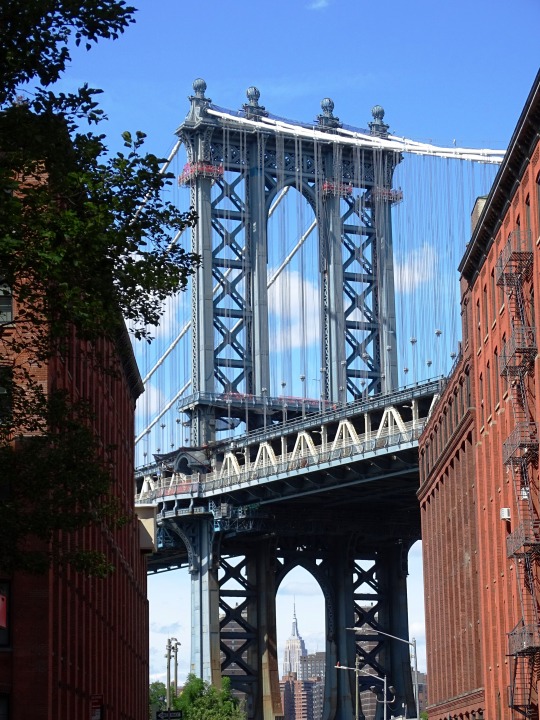

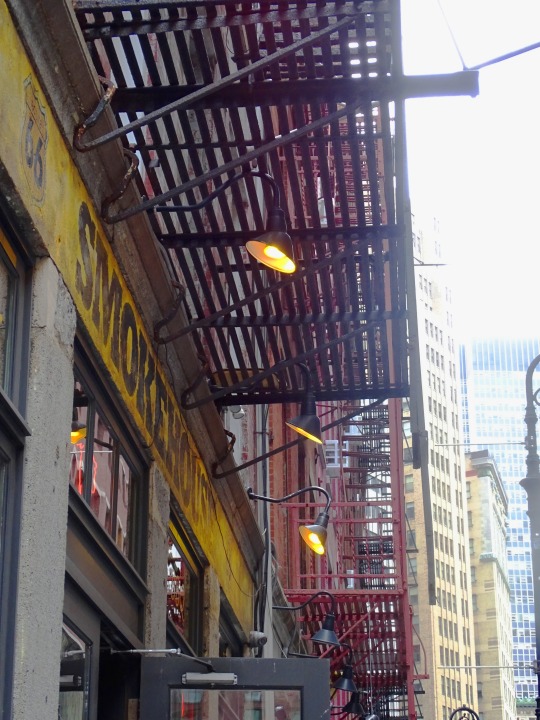


Great Britain and the Netherlands signed the Treaty of Westminster on February 19, 1674, ending the Third Anglo-Dutch War. A provision of the agreement transfers the Dutch colony of New Amsterdam to England, and it is renamed New York.
#Alamo by Tony Rosenthal#Chrysler Building#Radio City Music Hall#travel#Manhattan Bridge#Brooklyn Bridge#East River#Empire State Building#USA#New York City#architecture#cityscape#summer 2018#2019#vacation#Stephen A. Schwarzman Building#Trinity Church#Wall Street#One World Trade Center#Treaty of Westminster#19 February 1674#anniversary#US history#New Amsterdam
2 notes
·
View notes
Text
Weird Screams About History
Double Independence
It's come to my attention that some of you are unaware of the fact that Delaware declared independence twice in 1776, so I thought I'd explain.
Obviously, if you are aware of the history surrounding the creation of the United States, you know the second person Delaware declared independence from in 1776, the British Empire. I'm not going to get into that, as it's very easy to find causes of the American Revolution, causes which don't just affect Delaware. Plus, most people know about this. July 4, 1776, Delaware, along with its fellow colonies declared independence from the British Empire.
But nineteen days before Delaware declared independence from the British Empire, they declared independence from another governing family which had been ruling them since their foundation.
They declared independence from Pennsylvania.
Let's take a step back from 1776 though, as to explain why Delaware is declaring independence from another colony that wants out of the Empire.
This next except was written by my friend and fellow Delawarean, SmashingAsh98.
—————
The area of Delaware was originally claimed by the Dutch, but the first Dutch settlements were in the New York City area, so Delaware remained unsettled by Europeans until the Swedes showed up there in 1638. The Dutch didn't have the resources in North America nor the inclination to do anything about the small Swedish fort in the Delaware Bay at first. It wasn't until 1655 that the Dutch were able to reclaim the land, when the Director-General of the New Netherland colony, Peter Stuyvesant, led a force down to the Delaware Bay to invade. The Swedes surrendered without a fight and agreed to abide by the authority of Stuyvesant and the Dutch.
Nine years later, in 1664, the English took over the New Netherland colony from the Dutch which included Delaware. New Netherland was renamed New York and split into two, with part of it becoming New Jersey. Delaware actually remained part of New York, but all the ex-Dutch areas remained under shaky English control. The Dutch were able to invade and retake control of the area in 1673-74.
The English got control back with the treaty that ended the Third Anglo-Dutch War and the Dutch never again administered any of mainland North America. But for many decades after, Delaware remained a cultural mishmash of English, Dutch, and Swedish descendants, with their respective Anglican/Episcopalian, Dutch Reformed, and Swedish Lutheran church communities.
Between 1669 and 1672, Delaware was an incorporated colony under Maryland. Then Pennsylvania was chartered in 1681, and William Penn lobbied successfully to have Delaware transferred to Pennsylvania to give the new colony access to the sea.The Mason-Dixon line is said to have legally resolved vague outlines between Maryland and Pennsylvania and awarded Delaware to Pennsylvania.
From 1682 to 1776, Delaware was part of the Penn proprietorship and was known as the Lower Counties.
But the locals didn't like this (and hadn't really liked the Maryland takeover, either). After years of the religiously and culturally different Delawareans refusing to send representation to Philadelphia and already forming a local legislature of their own to manage their own affairs, the Lower Counties gained a separate assembly from the upper counties in 1701. It continued to have the same governor as the rest of Pennsylvania.
That remained the legal situation for almost a hundred years. Delaware, however, would eventually prove too independent. Penn had a hard time governing Delaware because the economy and geology was largely the same as that of the Chesapeake, rather than that of his Pennsylvania territory. When he tried to merge the governments of Delaware and Pennsylvania, the representatives from both areas clashed. The ideologies of the locals also clashed. Many from Delaware thought of Pennsylvanians as crazy radicals. Many from Delaware did not like Quaker ideology, especially as Delaware at that time had many slaves from its Swedish and Dutch colony days.
In 1774, the First Continental Congress was held in Philadelphia, and included delegates from both Pennsylvania legislatures--the one in Philadelphia and the one in Delaware. This was repeated during the Second Continental Congress, and as that Congress's actions began leading toward the Declaration of Independence, the Delaware legislature drew up their own state constitution and declared themselves an independent state from Pennsylvania. Pennsylvania honored the split and ultimately Delaware was admitted to the United States under its own authority.
—————
So that's how Delaware declared its independence twice in 1776, becoming an independent state of an independent nation.
18 notes
·
View notes